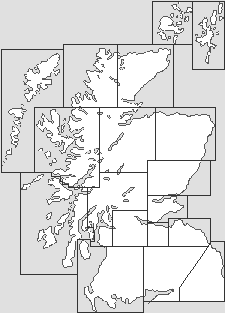 Restoration Yard in the Old Stables |
Dalkeith Country Park can be found immediately to the north of the town of Dalkeith in Midlothian and is only a short walk from it. The Town Gate stands at the north-east end of Dalkeith’s High Street and is one of two main ways in. The main vehicle access is via King’s Gate, which is only a short drive from the Edinburgh City Bypass at Sheriffhall Roundabout.
The park is a remarkable place offering nature, wildlife and walking trails in the thousand-acre estate of Dalkeith Palace, the seat of the Dukes of Buccleuch from 1642 until 1914. Today it is owned by the Buccleuch Living Heritage Trust and operated as a visitor attraction.
Dalkeith Palace is still at the heart of the park and offers a calendar of exhibitions, tours and events, but the focal point of the visitor experience, and the car parking, lies a little to the north-east. Here you find what was originally the palace’s extensive stable complex. After an £8.9 million redevelopment this opened to the public in 2016 as Restoration Yard. (Continues below images...)
 Dalkeith Palace from the East |
 A Closer View of Dalkeith Palace |
Restoration Yard has been superbly done and simply exudes quality. It is now home to an active and busy store, restaurant and wellbeing space. Nearby is the magnificent Orangerie, built in 1832. Also nearby is the Fort Douglas adventure playground for children up to 12 years old, complete with tunnels, towers and turreted tree houses. Older adventurers can take advantage of the three Go Ape courses in the park, which include eight ziplines over the River Esk.
Other attractions in the park include St Mary’s Episcopal Church, close to the Town Gate, as well as beautiful bridges, walking trails and the simple pleasure of wonderful landscapes and fresh air so close to Edinburgh.
A castle stood on the site now occupied by the palace from as early as the 1100s, when the lands here were owned by Clan Graham, Lords of Dalkeith. Most of the great and good of Scotland over the next few centuries stayed here at one point or another.
In 1642, Dalkeith Castle was sold to Francis Scott, 2nd Earl of Buccleuch. His daughter, Anne, married James, Duke of Monmouth, eldest illegitimate son of King Charles II in 1663, and they became the Duke and Duchess of Monmouth and Buccleuch. After the duke was executed for treason, Anne asked architect James Smith to use William of Orange's palace of Het Loo in the Netherlands as a model for the new Dalkeith Palace.
Construction began in 1702, and Dalkeith Palace was completed in 1711. The stable block that is now home to the Restoration Yard was bult in the 1740s to a design by William Adam. The remarkable Montagu Bridge was added in 1792 to a design by Robert Adam, while the Orangerie was later built to a design by William Burn.
 The Orangerie |

|
|
|
Visitor InformationView Location on MapDalkeith, EH22 1ST. info@dalkeithcountrypark.co.uk Tel: 0131 654 1666. Grid Ref: NT 335 680 www.dalkeithcountrypark.co.uk What3Words Location: ///recur.compress.bucked |
 Front View of the Palace |
 The Palace from the South |
 The Palace from the North |
 The Montagu Bridge |
 St Mary's Church |
 Town Gate Gatehouse |
 Dog Walkers |
 The Orangerie |







